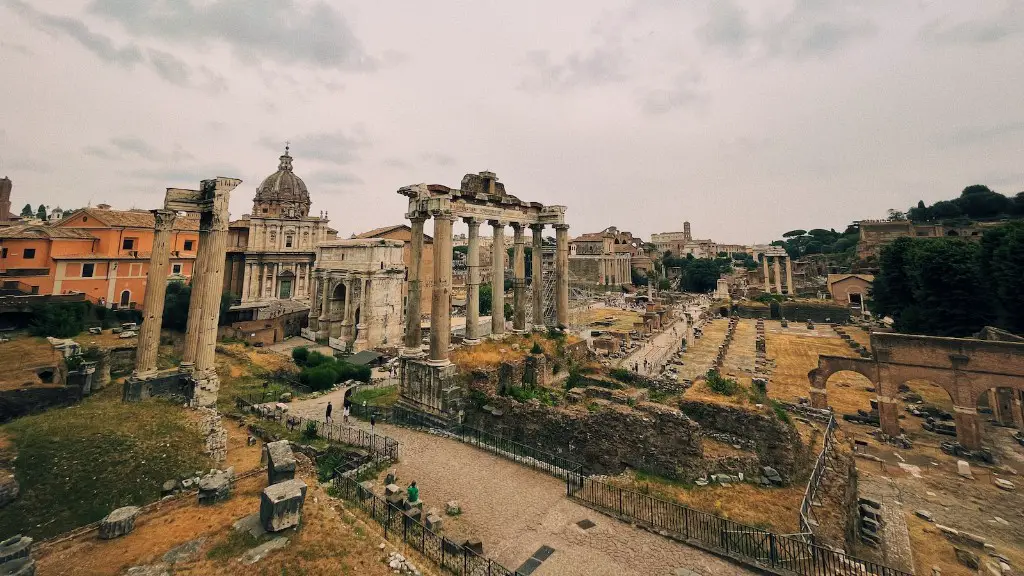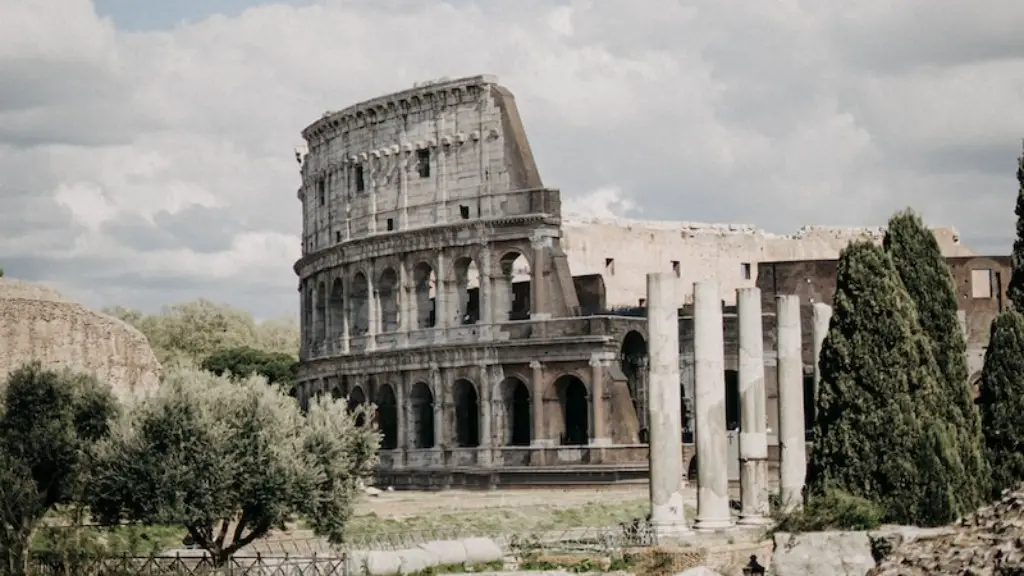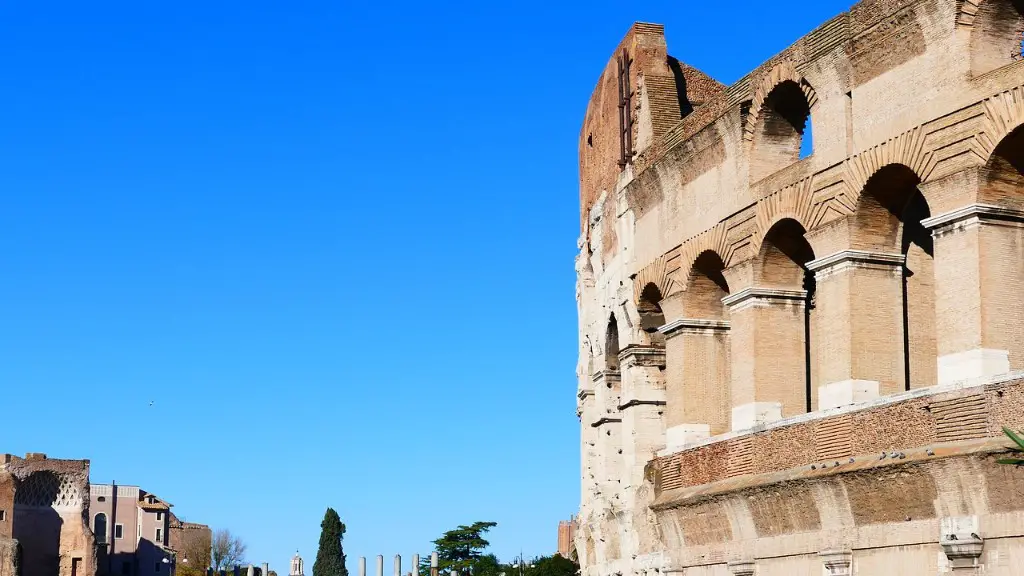Athleticism in Ancient Rome
The people of Ancient Rome were known for their impressive athleticism and physical conditioning. Games and sports were integral to their lifestyle and culture, with famous competition venues such as the Roman Colosseum hosting incredible spectacles. The most popular sports during the Republic era were chariot racing, gladiatorial bouts, and demonstrations of boxing, wrestling, and pankration.
Sports in ancient Rome existed in a variety of forms both competitive and recreational, including handball, ball-catching, wrestling, boxing, and javelin throwing. These games would be held in the open air, within a stadium or in the Roman Colosseum with many spectators watching in excitement. Boxing and wrestling were particularly popular and were primarily used for training soldiers.
The sport of chariot racing was also incredibly important for the ancient Romans, particularly in the competitive environment of the Roman Colosseum. Chariot racing had its own professional leagues competing in teams in the arena. It was also used as a form of entertainment in the imperial period, with lavishly designed chariots racing through the Colosseum and around the city streets.
Many of the sports in Ancient Rome were similar to the ones we have today. Gymnasiums were established for exercise and gambling on various sporting events. But the most popular sport, gladiatorial combat, is one that many modern sports are based on today. The most bloodthirsty of these events involved a gladiator fighting to the death, against another gladiator, animal or some other terrifying monster.
Role of Government
The government of Ancient Rome took a fundamentally different approach to sport than modern governments. Since sports were so important to the Roman culture, politicians would often use the opportunity to win public favour by holding extravagant gladiatorial battles, sporting matches and chariot races. Showing theatricality and grandiosity was rewarded with popularity, something Roman leaders sought after in their quest to gain power.
Romans also used sports in military training to prepare their soldiers for battle. Romans would construct vast arenas where large public events of war-like games between Roman soldiers, wild animals and foreign enemies took place. These events allowed Roman soldiers to hone their combat skills under supervised conditions and foster camaraderie among the troops. Soldiers were also pitted against each other in mock battles and hand-to-hand combat, such as boxing and wrestling, to prepare them for real battles.
Societal Impact
Sports in Ancient Rome had a huge impact on the social standing of its citizens. They became a source of pride for the rich and powerful, as well as for the common man. Professional sport was one way for Roman citizens of all classes to make money and rise to prominence, paving the way for them to take part in government or even rise to the highest ranks of Roman nobility.
Roman women also had the opportunity to participate in sport although on a much less prominent level than men. Women were allowed to compete in the other events, such as handball, ball-catching and javelin throwing, but they were prohibited from taking part in gladiatorial combat.
Modern Influence
The sports of ancient Rome are still visible in today’s world. Boxing has seen independent organizations in many countries, propelling the sport forward in some form or another. Weightlifting, athletics and chariot racing all have events and competitions with international appeal.
In terms of societal impact, modern sports are still viewed in a similar way. Professional sport is seen as a good way to make money and gain status in society. It also strengthens national pride and has brought people around the world together.
Impact of Greek Games
While the sports of Ancient Rome were typically quite violent, the influence of the Greeks on Roman sports was seen in more peaceful pursuits such as the Olympic Games. Unlike the gladiatorial combat and chariot racing, these games featured the more charitable aspects of sportsmanship. These benign competitions allowed Roman citizens to pursue physical excellence without violence.
The influences of the Greeks on Roman games were further felt in the development of ast Wear and chariot racing, where professionals from other nations would compete with their Roman counterparts. These events and venues allowed for a cross-cultural exchange of sports and cultural values which benefited both sides.
Gambling
Gambling was an integral part of the sports world in Ancient Rome, and there was no shortage of spectators. Roman politicians often used their political power and economic resources to fund lavish betting on these sports. Although the Roman Games were seen as an opportunity for political wealth, it is important to note that the true purpose of Roman Games was not for profit but for entertainment.
The Roman Games were seen as more than just a way to make money, they were a form of entertainment and a way to honour the gods. Roman citizens would celebrate their gods by holding religious ceremonies and festivals associated with the Games.
Attitudes to Sports in Ancient Rome
Romans viewed sport on a spiritual and even philosophical level. Participating in sport was believed to promote the health of the body and mind in Roman culture. The Epicureans, a sect of philosophers, promoted the idea that ancient athletics provided a moral and spiritual foundation for life.
At the time, sport was seen as a way to develop physical strength and discipline. The upper classes in Ancient Rome placed an emphasis on the physical strength, decorated their homes with antiquities from their favourite games and took part in chariot racing. Physical strength was seen as an essential part of being an ideal monumental figure, and it was the responsibility of the upper classes to display it.
Conclusion of Roman Sport
The sports of Ancient Rome were incredibly influential and are still reflected in modern day sports and cultural practices. Roman games featured the most advanced athletic feats of the day and continue to influence sports across the globe.
The influence of the Greeks on Roman sports developed more peaceful sporting pursuits such as the Olympic Games. Gambling was also an integral part of Roman sports, and elite Roman citizens would use their wealth to support their favourite teams. Finally, Roman citizens viewed sports on a spiritual and philosophical level, believing in its ability to bring both physical and mental well-being.


